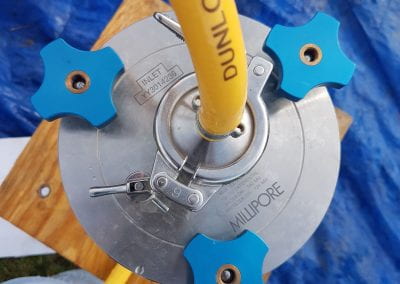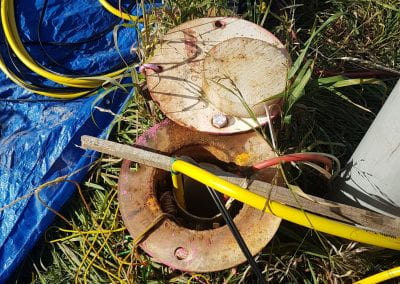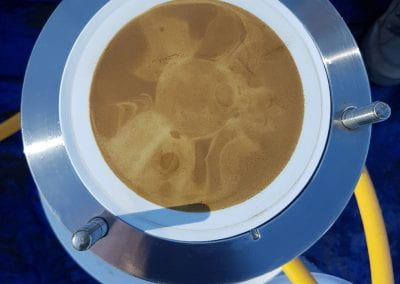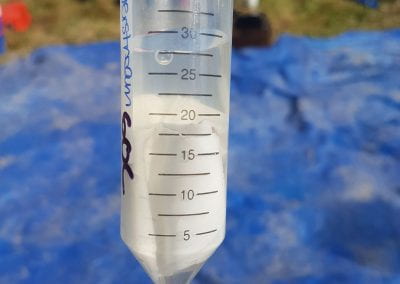Sampling microbial biomass
To sample groundwater microbial cells, filtration was used.
Groundwater wells were first purged to discard water that was already in the well, and therefore chemically different to the surrounding aquifer.
Then groundwater was pumped through flat cellulose filters to capture biomass. The amount pumped from a single well varied from litres to almost one hundred litres.
Filters coated in particulates and microbial biomass were then immersed in preservative (RNALater), and stored frozen at -80℃ to prevent nucleic acid (DNA and RNA) degradation.
Aquifers sampled
Regions sampled: Wellington, Auckland, Waikato and Canterbury
Aquifer lithology: Mostly alluvial sand/gravel, but also volcanic and shell bed
Land uses where wells were located: Industrial, agricultural, dairy, urban and reserves (note, although the size of the underlying aquifers mean groundwater traveling through them can be impacted by multiple land usage types)
Groundwater wells sampled: Over 50 wells. A subset of wells in Canterbury were also sampled for more detailed genomic analysis. These wells in the Canterbury plains spanned two aquifers in the Central Plains and Waimakariri-Ashley plains. They are both shallow and unconfined sandy gravel aquifers, which are globally common. Unconfined aquifers, such as these, are strongly influenced by surface water percolating down. The wells sampled were situated on farm land and reserves, and the groundwater included a range of nitrate levels from pristine to contaminated.
Groundwater chemistry: Spanning a range of different nitrate, sulfate, dissolved organic carbon and dissolved oxygen concentrations
Sample collection
2018: Canterbury (genomics), Auckland (survey)
2019: Taupo (survey): Wellington (survey): Canterbury (survey)





